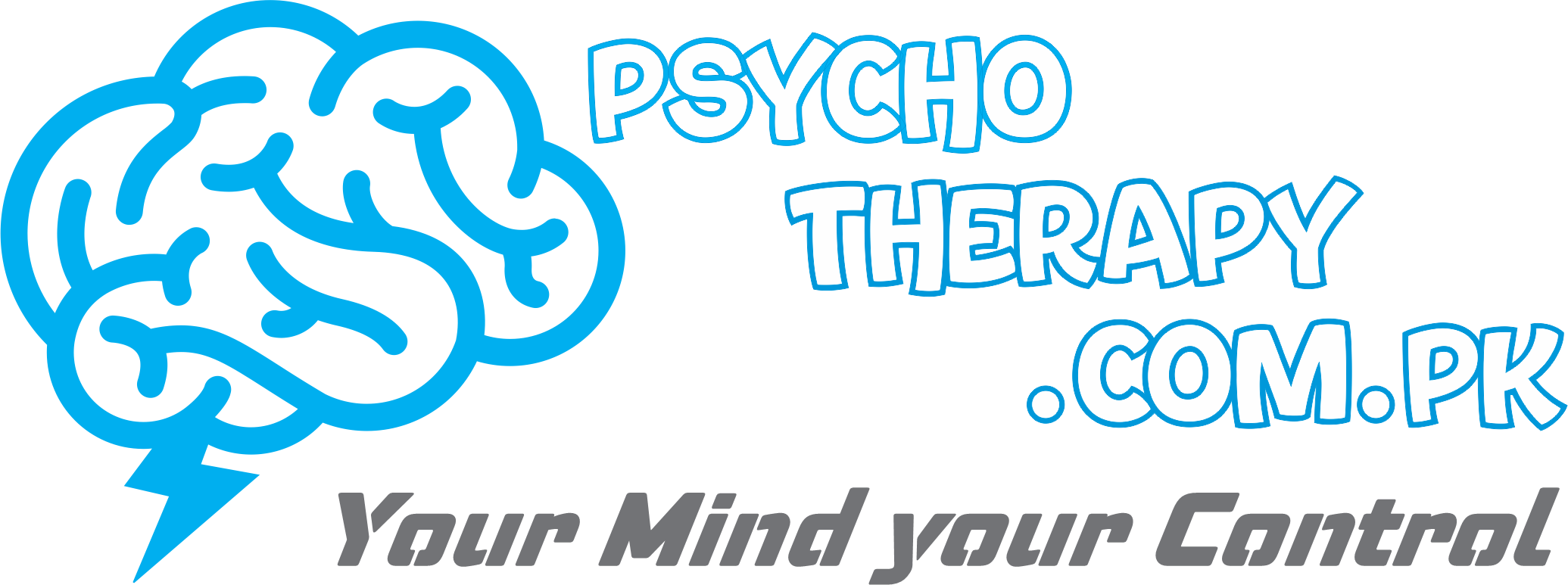Definition of Substance Induced Disorder
Substance-induced disorders, as per the Diagnostic and Statistical Manual of Mental Disorders (DSM-5), refer to a group of conditions caused by the ingestion of substances such as drugs, medications, or toxins. These disorders encompass a wide range of symptoms, including cognitive, behavioral, and physiological changes, which occur as a direct result of the effects of a substance on the central nervous system.
Substance-induced disorders can manifest in various ways, depending on the specific substance involved, its dosage, frequency of use, and individual factors. They can include substance-induced intoxication, withdrawal, psychotic disorders, mood disorders, anxiety disorders, sleep disorders, sexual dysfunction, and other conditions.
These disorders are diagnosed when the symptoms significantly impair an individual’s ability to function or cause distress, and they cannot be better explained by an independent mental disorder. Once the substance use or exposure stops, the symptoms of substance-induced disorders may diminish or disappear.
It’s crucial to differentiate substance-induced disorders from primary mental health disorders. This distinction is important in ensuring appropriate treatment and addressing the underlying causes, whether they are substance-related or independent mental health issues.

History of Substance Induced Disorder
The recognition and understanding of substance-induced disorders have evolved over time alongside advancements in psychology, psychiatry, and the study of substance abuse.
Early Observations:
Throughout history, societies have observed the effects of various substances on behavior and mental health. Historical records document the use of alcohol, opioids, hallucinogens, and other substances, often noting the changes in individuals’ cognitive and behavioral patterns due to substance ingestion.
Psychiatry’s Emergence:
The formal categorization of mental disorders and their relationship to substance use began to take shape in the late 19th and early 20th centuries. Early psychiatric pioneers like Emil Kraepelin and Sigmund Freud made observations about the impact of substances on mental health and behavior.
Diagnostic and Statistical Manual (DSM):
The DSM, published by the American Psychiatric Association, has undergone several revisions. In earlier editions, substance-induced disorders were included under various categories, such as “substance intoxication,” “substance withdrawal,” and specific substance-induced mental disorders. These were formally classified and listed based on the symptoms induced by specific substances.
DSM-III and Subsequent Revisions:
The DSM-III, released in 1980, made substantial changes in the classification and diagnosis of mental disorders. It introduced clearer criteria for substance-induced disorders, distinguishing them from independent mental health disorders. Subsequent editions, like DSM-IV and DSM-5, refined these classifications further, providing more specific criteria for diagnosing substance-induced disorders.
Research and Understanding:
Over the years, extensive research has contributed to a better understanding of how various substances affect the brain and behavior. Studies have helped identify specific patterns of symptoms associated with different substances, aiding in the diagnosis and treatment of substance-induced disorders.
Treatment and Interventions:
Advancements in treatment methods and interventions have emerged, focusing on addressing both the substance use and the associated mental health symptoms. Integrated approaches that consider both aspects simultaneously have become more prevalent in managing substance-induced disorders.
Today, substance-induced disorders are recognized as a significant aspect of mental health diagnostics and treatment. They are seen in conjunction with substance abuse disorders, emphasizing the importance of addressing both substance use and any resultant mental health issues for comprehensive care. Ongoing research and clinical observations continue to refine our understanding and approaches to managing these complex conditions.
DSM-5 Criteria of Substance Induced Disorder
The DSM-5 outlines specific criteria for diagnosing substance-induced disorders. These disorders are categorized based on the effects of substances on an individual’s mental state and behavior. Here are the general criteria for substance-induced disorders:
Substance Intoxication:
- Recent ingestion or exposure to a substance leads to clinically significant problematic behavioral or psychological changes.
- These changes develop during or shortly after substance use.
- Symptoms are specific to the substance and are not better explained by another medical or mental health condition.
Substance Withdrawal:
- Development of clinically significant distress or impairment in social, occupational, or other important areas of functioning due to the cessation or reduction of substance use.
- Presence of withdrawal symptoms after the cessation of substance use that are specific to the substance and cause significant distress or impairment.
Other Substance-Induced Disorders:
- Substance-Induced Mental Disorders: These are mental health conditions, such as depressive, psychotic, or anxiety disorders, that arise during or shortly after substance use and persist beyond the typical duration of intoxication or withdrawal. They are directly caused by the substance’s effects.
- Substance-Induced Sleep Disorder: Sleep disturbances caused by the effects of a substance. These disturbances are not related to withdrawal or other independent sleep disorders.
- Substance-Induced Sexual Dysfunction: Impairment in sexual function, such as erectile dysfunction or inhibited sexual desire, due to the effects of a substance.
The DSM-5 criteria require that the symptoms of these substance-induced disorders cause significant distress, impair functioning in various areas of life, and cannot be better accounted for by another mental disorder that is not substance-induced.
Additionally, it’s important to note that the diagnosis of a substance-induced disorder necessitates a thorough assessment and consideration of the individual’s history of substance use, the specific substances involved, the timing of symptoms in relation to substance use, and the presence of any co-occurring mental health conditions.
Etiology of Substance Induced Disorder
Substance-induced disorders result from the direct effects of various substances on the central nervous system, altering brain function and leading to changes in behavior, cognition, mood, and other mental processes. The etiology of substance-induced disorders can be understood through several factors:
Neurochemical Effects:
Substances such as alcohol, drugs, medications, and toxins act on neurotransmitter systems in the brain. They can either enhance or inhibit the release, reuptake, or binding of neurotransmitters like dopamine, serotonin, GABA, and others. These alterations disrupt the normal functioning of neural pathways, leading to the manifestation of symptoms associated with substance-induced disorders.
Brain Structure and Function:
Chronic substance use can lead to structural and functional changes in the brain. Prolonged exposure to certain substances can impact brain regions associated with decision-making, reward processing, impulse control, and emotional regulation. These alterations contribute to the development of addictive behaviors and psychiatric symptoms seen in substance-induced disorders.
Genetic Predisposition:
Genetic factors play a role in an individual’s susceptibility to developing substance use disorders and related mental health issues. Certain genetic variations can influence how the body processes and responds to specific substances, increasing the risk of addiction or adverse reactions leading to substance-induced disorders.
Environmental Influences:
Social, environmental, and psychological factors contribute significantly to the development of substance-induced disorders. Stressful life events, trauma, peer influence, family history of substance use, and availability of substances in the environment can all contribute to the initiation and continuation of substance use, which may subsequently lead to substance-induced disorders.
Psychological Factors:
Co-occurring mental health conditions, such as anxiety, depression, or personality disorders, may precede or result from substance use. Substance use may sometimes be an attempt to self-medicate underlying psychological symptoms, and in turn, chronic substance use can exacerbate or create new mental health issues, culminating in substance-induced disorders.
Dose, Duration, and Frequency of Substance Use:
The severity and type of substance-induced disorder can be influenced by the amount, duration, and frequency of substance use. Different substances have varied effects on the body and brain, and the development of substance-induced disorders may depend on how consistently and intensely an individual uses the substance.
Understanding the interplay between these factors helps in comprehending the complex etiology of substance-induced disorders. Effective treatment and interventions often involve addressing multiple aspects, including substance use, psychological factors, social environment, and co-occurring conditions, to support recovery and prevent relapse.
Theories related to Substance Induced Disorder
Several theories attempt to explain the development and manifestation of substance-induced disorders. These theories provide insights into various aspects of addiction, substance use, and their effects on mental health. Some key theories related to substance-induced disorders include:
Disease Model:
This model conceptualizes addiction as a chronic, relapsing brain disease characterized by compulsive drug seeking and use despite harmful consequences. It emphasizes the biological and genetic factors contributing to addiction, considering substance use disorders as medical conditions requiring treatment.
Biopsychosocial Model:
This model considers the interaction of biological, psychological, and social factors in the development of substance-induced disorders. It acknowledges the influence of genetic predisposition, brain chemistry, psychological vulnerabilities, and social environment in shaping addictive behaviors and substance use.
Reward Circuitry and Dopamine Hypothesis:
Substance use activates the brain’s reward circuitry, leading to the release of dopamine, a neurotransmitter associated with pleasure and reinforcement. The dopamine hypothesis suggests that the repeated activation of this reward system by substances reinforces drug-seeking behaviors, contributing to addiction and substance-induced disorders.
Psychological Theories (Self-Medication, Behavioral Reinforcement):
These theories explore the role of psychological factors in substance use. The self-medication hypothesis suggests that individuals may use substances to alleviate distressing symptoms of underlying mental health conditions. Behavioral reinforcement theories propose that repeated exposure to pleasurable effects of substances reinforces their use, leading to addiction.
Neuroadaptation and Tolerance:
Prolonged substance use induces neuroadaptations in the brain, leading to tolerance (requiring higher doses for the same effect) and withdrawal symptoms upon cessation. These changes contribute to the cycle of addiction and the development of substance-induced disorders.
Social Learning Theory:
This theory posits that individuals learn behaviors, including substance use, through observation, imitation, and reinforcement within social contexts. Exposure to substance use models in the environment can influence an individual’s attitudes and behaviors toward substances.
Stress and Coping Theories:
Stressful life events or chronic stress can trigger substance use as a coping mechanism. Theories in this domain explore how stressors contribute to the initiation and maintenance of substance use and subsequent substance-induced disorders.
These theories provide frameworks for understanding the multifaceted nature of substance-induced disorders, considering biological, psychological, and social factors. They contribute to the development of interventions and treatment approaches aimed at addressing the complexities of addiction and substance-related mental health issues.
Risk factors of Substance Induced Disorder
Substance-induced disorders can be influenced by a variety of factors that increase an individual’s vulnerability to developing these conditions. These risk factors can be categorized into different domains:
Biological and Genetic Factors:
- Family history: Having a family history of substance use disorders or mental health conditions can increase susceptibility.
- Genetic predisposition: Certain genetic variations can impact how an individual responds to substances, influencing the likelihood of developing substance-induced disorders.
Early Exposure and Developmental Factors:
- Early initiation: Starting substance use at a young age can heighten the risk of developing substance-induced disorders. Early exposure during critical developmental stages can impact brain development and increase vulnerability to addiction.
- Adverse childhood experiences: Trauma, neglect, abuse, or dysfunctional family environments during childhood can contribute to the development of substance use disorders later in life.
Psychological and Psychiatric Factors:
- Co-occurring mental health conditions: Pre-existing mental health disorders, such as depression, anxiety, bipolar disorder, or personality disorders, can increase the likelihood of developing substance-induced disorders.
- Stress and coping mechanisms: High levels of chronic stress or an inability to cope with stress in healthy ways may lead individuals to use substances as a coping mechanism, increasing the risk of developing substance-induced disorders.
Social and Environmental Influences:
- Peer influence: Pressure from peers or social circles that encourage or normalize substance use can significantly impact an individual’s behavior.
- Social environment: Exposure to environments where substances are readily available or where substance use is normalized can increase the risk of developing substance-induced disorders.
Socioeconomic Factors:
- Poverty and lack of resources: Socioeconomic disparities, lack of access to education, employment opportunities, or resources for mental health support can contribute to increased vulnerability to substance use disorders.
Personality Traits and Behavior:
- Impulsivity and sensation seeking: Individuals with high levels of impulsivity or a tendency to seek intense sensations may be more prone to experimenting with substances and developing substance-induced disorders.
Understanding these risk factors helps in identifying individuals who might be at a higher risk of developing substance-induced disorders, enabling targeted interventions and prevention strategies to mitigate these risks. It’s important to note that the presence of risk factors does not guarantee the development of a substance-induced disorder but increases the likelihood in susceptible individuals.
Treatment for Substance Induced Disorder
The treatment for substance-induced disorders typically involves a comprehensive approach that addresses both the substance use and any co-occurring mental health issues. Here are some key components of treatment:
Detoxification (if necessary):
In cases of severe substance dependence, medically supervised detoxification may be required to manage withdrawal symptoms safely. This process helps individuals safely eliminate the substance from their body while managing any physical or psychological withdrawal effects.
Behavioral Therapies:
Various behavioral therapies, such as cognitive-behavioral therapy (CBT), motivational interviewing, contingency management, and dialectical behavior therapy (DBT), are effective in treating substance use disorders. These therapies aim to modify thought patterns, behaviors, and coping mechanisms associated with substance use.
Medication-Assisted Treatment (MAT):
Certain medications can be used as part of treatment for substance use disorders. For instance, medications like methadone, buprenorphine, naltrexone, or acamprosate may be prescribed to manage cravings, reduce withdrawal symptoms, or prevent relapse for specific substances like opioids, alcohol, or nicotine.
Dual Diagnosis Treatment:
When substance use disorders co-occur with mental health conditions, integrated treatment that addresses both issues simultaneously is crucial. Treating underlying mental health disorders alongside substance use helps in comprehensive recovery.
Support Groups and Peer Support:
Participation in support groups like Alcoholics Anonymous (AA), Narcotics Anonymous (NA), or SMART Recovery can provide valuable peer support, encouragement, and accountability during the recovery journey.
Family and Social Support:
Involving family members or loved ones in therapy or support programs can create a supportive environment for recovery and help in addressing family dynamics that might contribute to substance use.
Relapse Prevention Strategies:
Learning and practicing relapse prevention skills, identifying triggers, developing coping strategies, and creating a relapse prevention plan are crucial elements to prevent relapse and sustain recovery.
Lifestyle Changes:
Encouraging healthy lifestyle changes, such as regular exercise, proper nutrition, stress reduction techniques, and engaging in meaningful activities, can support recovery and overall well-being.
Continued Care and Aftercare:
Continued support through ongoing therapy, follow-up appointments, and participation in aftercare programs is vital for long-term recovery and to maintain sobriety.
Treatment plans are often tailored to meet the individual’s specific needs, considering the substance of abuse, severity of the disorder, presence of co-occurring conditions, and personal circumstances. Collaboration between healthcare professionals, therapists, and the individual seeking treatment is essential for a successful recovery journey.
Therapies for Substance Induced Disorder
Substance-induced disorders encompass a range of conditions caused by the effects of substances on mental health. Therapies for these disorders often involve a combination of approaches aimed at addressing substance use, managing associated symptoms, and promoting overall well-being. Here are some key therapies utilized in treating substance-induced disorders:
Cognitive-Behavioral Therapy (CBT):
CBT is a widely used therapeutic approach for substance use disorders. It helps individuals recognize and modify negative thought patterns and behaviors associated with substance use. CBT teaches coping skills, problem-solving techniques, and strategies to manage cravings and prevent relapse.
Motivational Interviewing (MI):
MI is a client-centered approach focused on enhancing an individual’s motivation to change substance use behaviors. It involves exploring and resolving ambivalence about quitting substances and empowering individuals to set and achieve their goals for change.
Contingency Management (CM):
CM is a behavioral therapy that utilizes positive reinforcement to encourage abstinence from substances. It involves rewarding individuals with incentives, such as vouchers or privileges, for meeting predetermined goals related to sobriety or treatment adherence.
Dialectical Behavior Therapy (DBT):
DBT combines cognitive-behavioral techniques with mindfulness practices. It helps individuals regulate emotions, manage stress, and develop healthy coping mechanisms to address substance use and emotional dysregulation.
12-Step Facilitation Therapy:
Based on the principles of Alcoholics Anonymous (AA) and similar programs, this therapy involves attending meetings, working through the 12 steps, and embracing a spiritual or supportive community for recovery
Family Therapy:
Involving family members in therapy can be beneficial for addressing family dynamics, communication patterns, and supporting the recovery process. It can help improve relationships, provide education, and create a supportive environment.
Medication-Assisted Treatment (MAT):
For specific substance use disorders, medications may be prescribed as part of treatment. Medications like methadone, buprenorphine, naltrexone, or disulfiram can help manage cravings, withdrawal symptoms, or prevent relapse for substances like opioids, alcohol, or nicotine.
Supportive Psychotherapy:
This form of therapy focuses on providing emotional support, guidance, and education to individuals with substance-induced disorders. It aims to create a supportive therapeutic relationship to enhance motivation and address issues related to substance use.
These therapies are often used in combination or tailored to meet the individual’s specific needs and circumstances. The choice of therapy may depend on factors such as the type of substance used, severity of the disorder, presence of co-occurring conditions, and the individual’s preferences. A comprehensive treatment plan often integrates multiple therapeutic approaches to promote recovery and long-term sobriety.
Preventions of Substance Induced Disorder
Preventing substance-induced disorders involves strategies aimed at reducing the risk of developing these conditions and promoting healthy behaviors. Some preventive measures include:
Education and Awareness Programs:
Implementing educational initiatives that provide accurate information about the risks associated with substance use, the effects of different substances on health, and the development of addiction can help individuals make informed decisions.
Early Intervention:
Identifying and addressing risk factors early, especially in adolescents and young adults, can help prevent the initiation of substance use or the escalation to problematic patterns.
Promotion of Healthy Coping Mechanisms:
Teaching and encouraging healthy coping strategies to manage stress, emotions, and life challenges can reduce the likelihood of turning to substances for relief.
Development of Life Skills:
Offering programs that enhance life skills such as decision-making, problem-solving, assertiveness, and effective communication can help individuals navigate challenging situations without resorting to substance use.
Family Support and Education:
Educating families about the risks of substance use and fostering supportive, communicative family environments can contribute significantly to prevention efforts.
Community-Based Interventions:
Engaging communities in creating supportive environments that discourage substance use and promote healthy activities can reduce the availability and normalization of substance use.
Restricting Access:
Implementing policies and regulations that control the availability of substances, especially among youth, through measures such as age restrictions, limited access, and enforcement of legal consequences for illegal substance use.
Screening and Brief Interventions:
Routine screening in healthcare settings to identify individuals at risk of substance use disorders and offering brief interventions or referrals to specialized treatment can help prevent the progression of substance use.
Peer and Mentorship Programs:
Establishing peer-led programs or mentorship initiatives that promote positive behaviors and offer support networks can be effective in influencing behavior among young individuals.
Media Campaigns:
Utilizing media platforms to disseminate messages about the risks of substance use and to promote positive alternatives and healthy lifestyles.
Promotion of Mental Health Awareness:
Increasing awareness about mental health issues and providing access to mental health services can help address underlying mental health conditions that may contribute to substance use.
Preventive efforts should consider a comprehensive approach that targets multiple levels—individual, family, community, and societal—to create supportive environments and equip individuals with the tools needed to make healthy choices and avoid substance-induced disorders.










